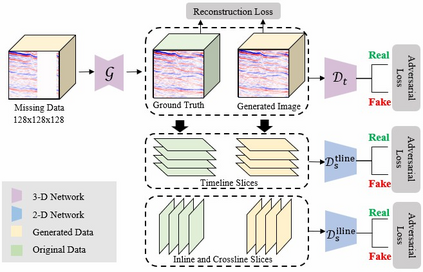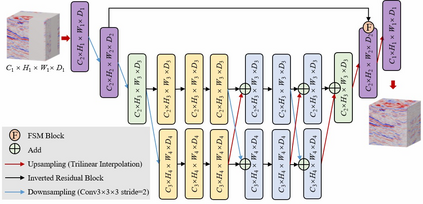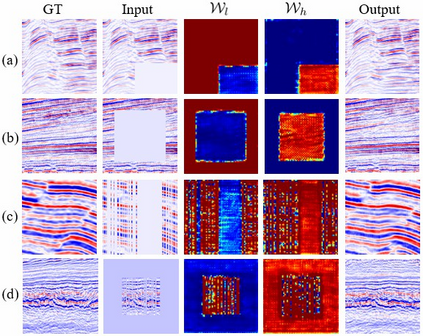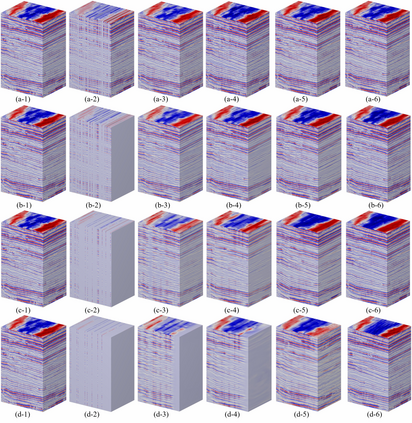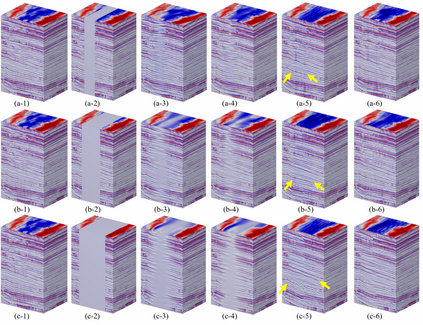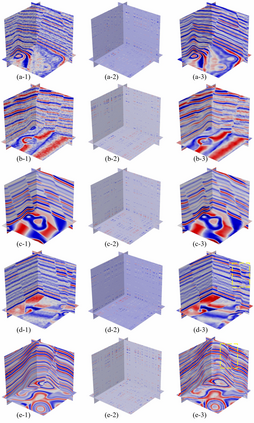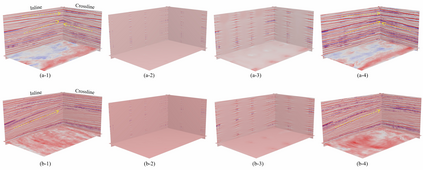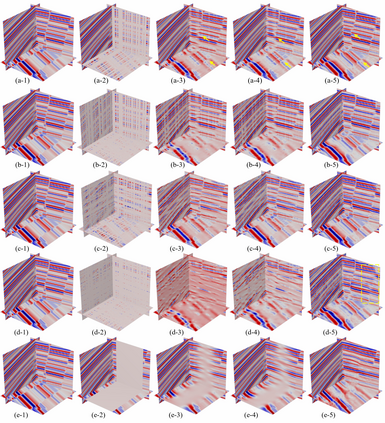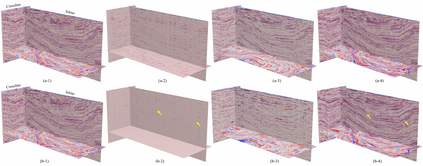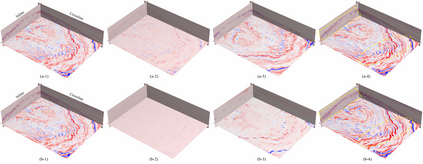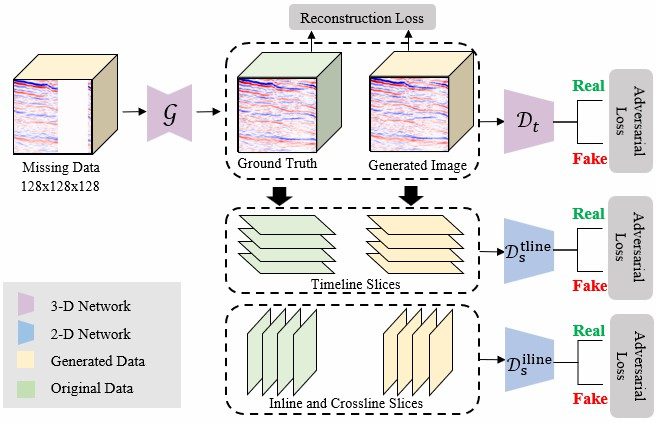The interpolation and reconstruction of missing traces is a crucial step in seismic data processing, moreover it is also a highly ill-posed problem, especially for complex cases such as high-ratio random discrete missing, continuous missing and missing in fault-rich or salt body surveys. These complex cases are rarely mentioned in current works. To cope with complex missing cases, we propose Multi-Dimensional Adversarial GAN (MDA GAN), a novel 3-D GAN framework. It employs three discriminators to ensure the consistency of the reconstructed data with the original data distribution in each dimension. The feature splicing module (FSM) is designed and embedded into the generator of this framework, which automatically splices the features of the unmissing part with those of the reconstructed part (missing part), thus fully preserving the information of the unmissing part. To prevent pixel distortion in the seismic data caused by the adversarial learning process, we propose a new reconstruction loss Tanh Cross Entropy (TCE) loss to provide smoother gradients. We experimentally verified the effectiveness of the individual components of the study and then tested the method on multiple publicly available data. The method achieves reasonable reconstructions for up to 95% of random discrete missing, 100 traces of continuous missing and a mixture of both types with a cumulative 99.4% missing. In fault and salt body enriched surveys, MDA GAN still yields promising results for complex cases. Experimentally it has been demonstrated that our method achieves better performance than other methods in both simple and complex cases.
翻译:缺少的痕迹的内插和重建是地震数据处理中的一个关键步骤,此外,它也是一个非常糟糕的问题,特别是对于高鼠随机随机随机离散失踪、在有缺陷的或盐体调查中持续失踪和失踪等复杂案件而言,这些复杂案件在目前工作中很少提及。为了处理复杂的失踪案件,我们提议采用三维GAN(MDA GAN)这个新型的3D GAN框架。它使用三个导师来确保重建后的数据与每个层面的原始数据分布的一致性。特效拼接模块(FSM)设计并嵌入这个框架的生成器中,这自动使未漏部分与重塑部分(缺失部分)的特征发生交错,从而充分保存未漏部分的信息。为了防止对抗性学习过程造成的地震数据扭曲,我们提议采用一个新的重建损失Tanh Crosy Entropy (TCE) 来提供更清晰的梯度。我们实验性地核实了这一研究的各个组成部分的有效性,并嵌入这个框架,这自动地使未漏部分的特性部分的特性部分(缺失部分)与GMLML4)的累积方法都得到了更好的利用。

